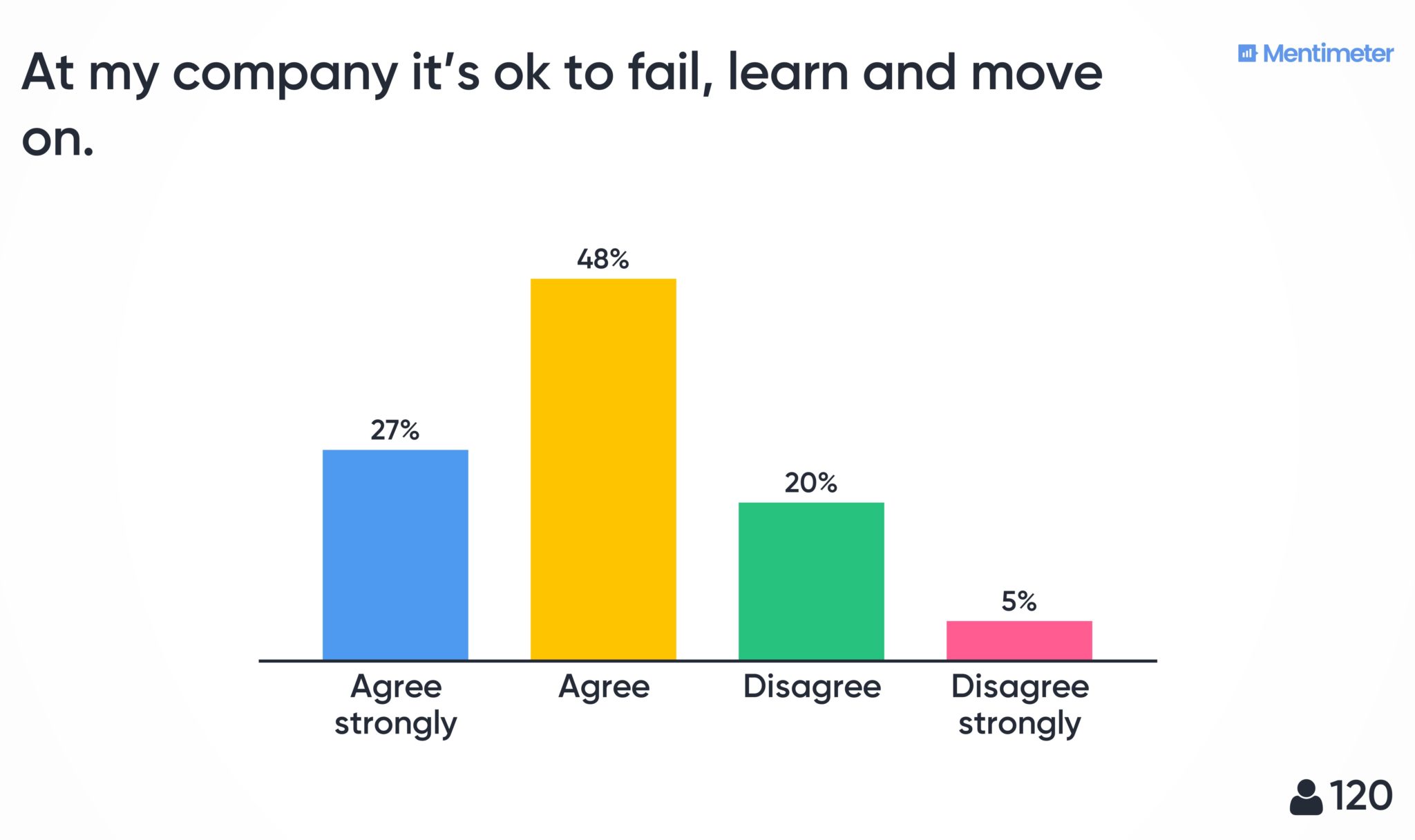
Five crucial areas for innovation
How innovative is your company?
At our breakfast seminar “Business Value through Design” we took the opportunity to find out the state of innovation in Stockholm. After all, the city was ranked as the most innovative region in the EU in 2017. Over 120 people from diverse roles at small and large and public and private organisations took part in the survey. Since they were at the breakfast seminar we can assume they are interested in using design methodologies to create business value. Here are the results.
Here’s how participants answered the survey
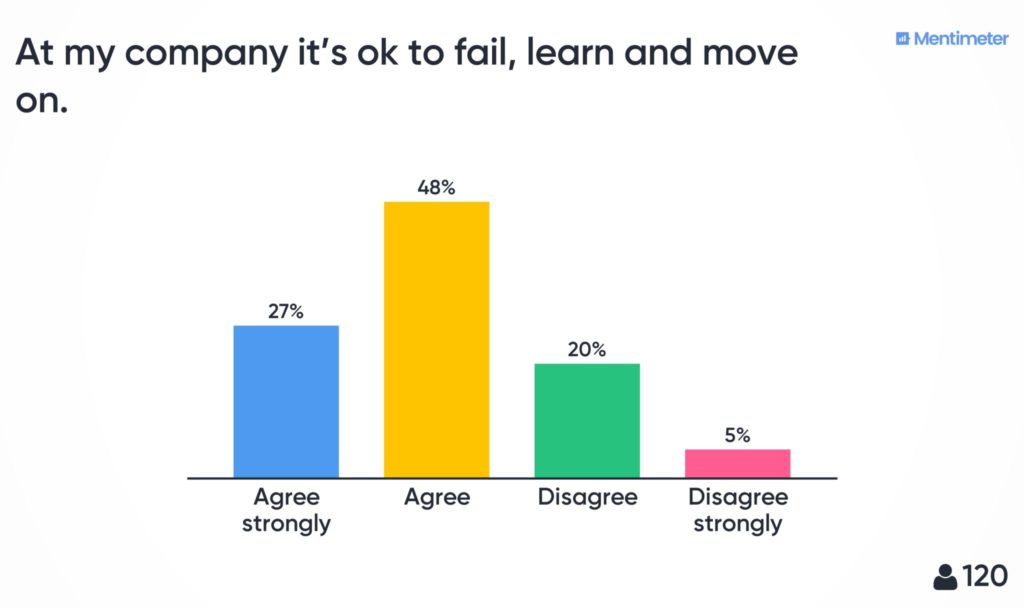
Innovation is an uncertain business, if it weren’t then businesses would always thrive. Experimentation is a key ingredient in innovation, whether it’s trying out a new internal accounting process or developing a new digital solution for customers. If you build a safe environment in which people feel they can fail, learn and move on, you will be rewarded. Staff will be happier, more daring and will learn more. Ultimately, you should see more realisable innovative ideas.
75% of participants said it is OK to fail, learn and move on at their companies. Organisations in Stockholm seem to excel at creating safe environments for employees.
Is this a challenge in your company? Check out the Daresay Teamwork kit. A handbook with tools and methods to help you create efficient teams and the type of work environment that is crucial for innovation to happen.
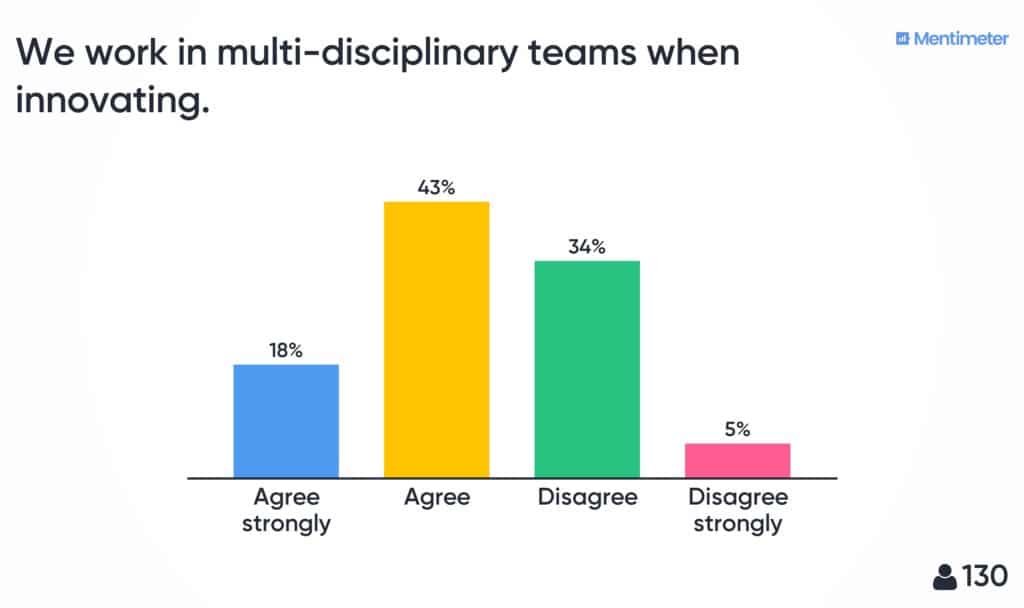
Too often, the innovative process is left to likeminded people. But when you bring diversity into a team in the form of different roles, backgrounds and experiences, ideation can blossom. Joan from accounting won’t think the same way as Jim from marketing, and Josh from HR won’t think the same way as Jill from sales, but together they may have some radical ideas that your innovation department would never think of. As designers we can give them the tools to explore and ideate.
61% of participants said they work in multi-disciplinary teams when innovating. Still a good result for organisations in Stockholm, but there’s definitely room for improvement.
Are you curious to learn more on how to build and foster an innovation culture. Read the interview with Pernilla Dahlman.
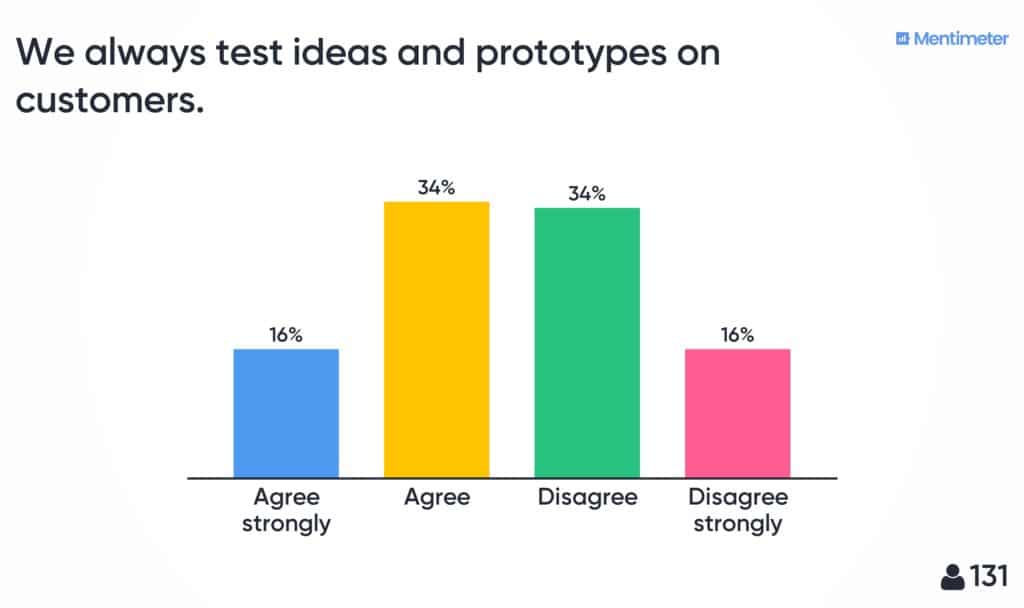
Diversity can generate new ideas, but it’s only by speaking to customers that you can get the necessary insights on which direction a product or service should take. What sounds great around a conference table or on a whiteboard may have result in little or no response when put in front of a customer. It’s far better to find this out at an early stage rather than when you’ve sunk unrecoverable costs into it. Talk to customers and find out what they really want, they test ideas on them.
50% of participants work at companies that test ideas and prototypes with customers. Oh dear Stockholm, half of organisations are ignoring customers at one of the most important stages of business.
Is this something you’re struggling with? How do you actually do? Check out our one day Service Design course where you will get to try out some of the most common methods in design like doing user interviews, prototyping and making a customer journeys.
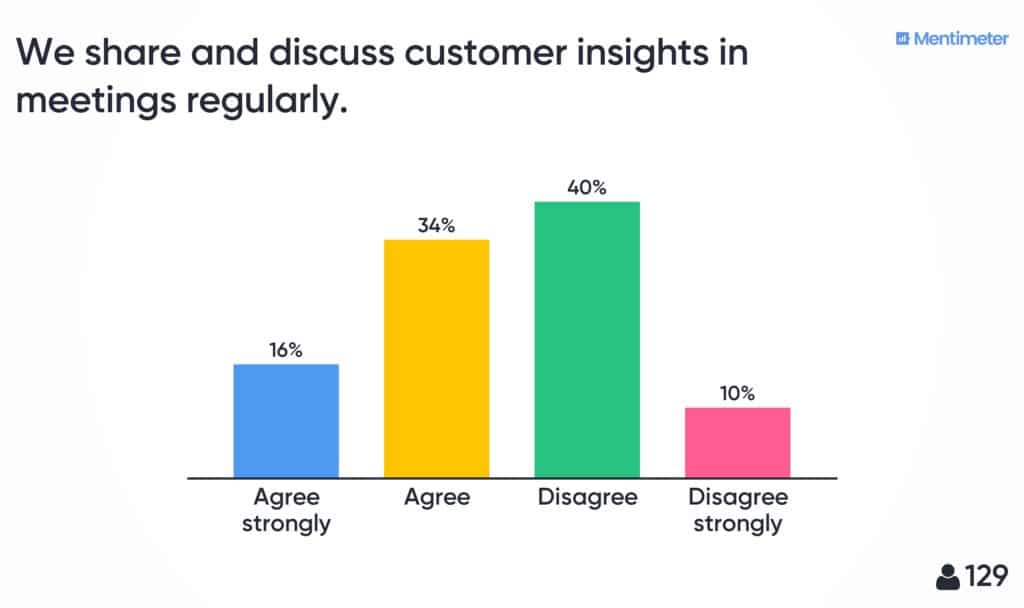
When you become a truly customer-driven organisation, customer insights become a regular agenda point in meetings. What can we do? quickly becomes what do they want? as we begin to see our products and services from the customer’s perspective. By elevating this perspective through an organisation all the way up to senior management, the organisation can move in a completely new direction. And if you find your capabilities can’t deliver on customers wishes, you either need to grow your capabilities (inhouse or externally) or change (loose) your customers.
50% of participants work at customer-centric companies. Half of organisations in Stockholm need to elevate customer focus. Is it the same 50% that don’t involve customers in innovation?
Are your meetings lacking customer focus. Perhaps a customer centric roadmap could help you in the right direction? Read more on what it means and how to create this roadmap.
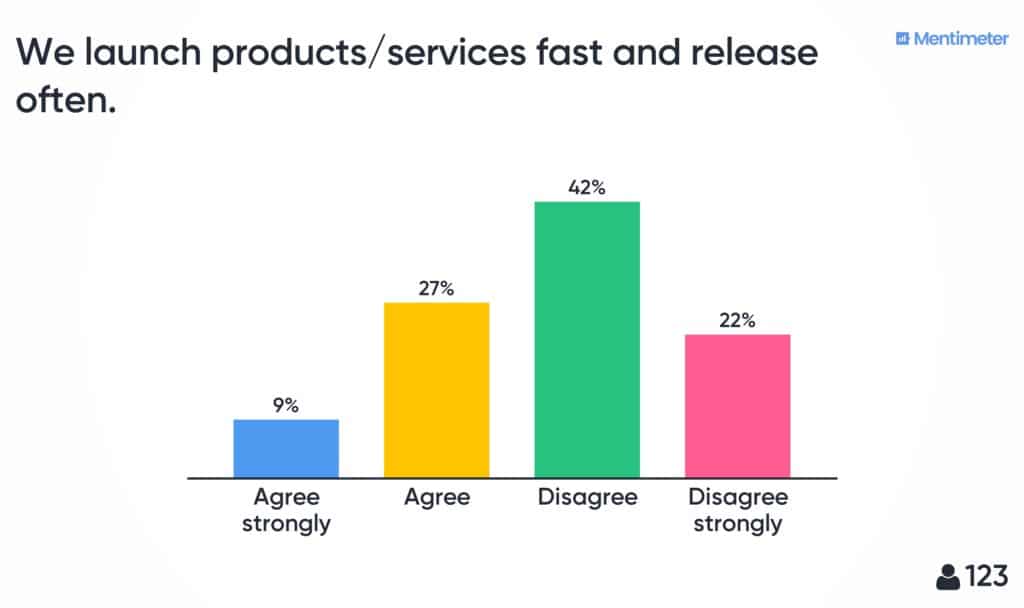
Innovation doesn’t end at launch, or at least it shouldn’t. Today’s digital environment gives us the perfect opportunity to launch quickly and release updates based on customer feedback. Getting a product out before your competitors can make all the difference. It doesn’t have to be perfect first time around. Put out a minimal viable product and excite your customers with new releases that are built on the feedback they give you – both from data and direct customer interactions.
36% of participants launch fast and release often. This is the worst statistic for organisations in Stockholm. Could this hold them back in the future as competitors around the world get their products out first?
There are many ways to go from idea to prototype to actually releasing something. A one week design sprint could help you explore an idea or try a solution fast. Find out more.